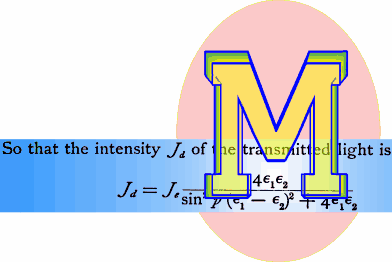
Note: Permission to reproduce this paper has been withheld by the publisher,
The American Psychological Association.
A theoretical treatment of the Pulfrich effect is developed for combining data
on the assumption that the time constant at corresponding depths in any human
visual system will be the same for both eyes.
A superthreshold model of latency based on the Hodgkin-Huxley equations is
derived. Setting a solution of the homogeneous system equal to the input
retinal illuminance I yields a time constant tau such that,
for vn the output of the n-th serial stage of
visual processing, tau0 a dark-current time constant,
and w a scaling constant.
This approach leads to a power-function formula for the Pulfrich
latency,
in which K is an arbitrary scaling constant, and T0
represents an offset latency associated with the lower-I Pulfrich
target.
Lit's classic 1949 data then are fit almost perfectly by this formula with
n = 4, K = 78, and T0 = 71.9.
One conclusion is that the system yielding the Pulfrich latencies must be equivalent temporally to a system with about four Hodgkin-Huxley-like stages.
Back to Pulfrich Effect Home. University Privacy Policy
The Pulfrich Effect, SIU-C. Last updated 2000-07-23